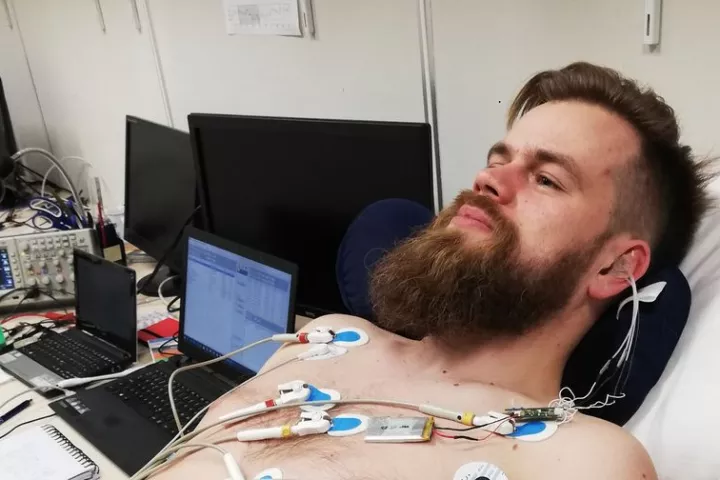Vienna University of Technology
-
What we think of as polyester fabric is most often actually a blend of polyester and cotton, which has proven very difficult to recycle. A new solvent, however, breaks the blend down into its two components, leaving both almost completely reusable.
-
Wild boar in the woods of Austria and Germany have levels of radioactivity that makes their meat unsuitable for eating. Once thought to be the result of the Chernobyl nuclear accident, new research points to another, darker, source of contamination.
-
As some readers may already know, in-ear stimulation of the vagus nerve can help relieve pain in other parts of the body. Thanks to new research by Austrian scientists, such treatments could soon be more effective than ever.
-
A radioactive cloud spread over Europe in late 2017. Despite official denials, all the evidence pointed to Russia. A new study tracking over 1,000 atmospheric measurements suggests an unreported nuclear accident did likely occur at the Mayak facility in the Southern Ural mountains of Russia.
-
You've no doubt seen string art before – it consists of images created by running thread between pins on a board. Well, scientists at Austria's Vienna University of Technology (TU Wien) have recently created an algorithm that allows a robot to recreate existing images in string-art form.
-
Magnets are typically made via a costly injection molding process. Scientists, however, often just need a few of them in specific shapes. Thankfully for them, an Austrian team has developed a method of 3D printing magnets in any form desired.
-
Engineers at the Vienna University of Technology foresee a future where platforms 100 m long and covered with solar panels float on even heavy seas thanks to a new floatation system called Heliofloat.
-
When a vein or artery gets seriously blocked, a common course of action involves replacing it with part of another blood vessel harvested from elsewhere in the patient's body. Scientists have now developed an alternative – polymer fabric vessels that transform into biological ones, once implanted.
-
Austrian scientists have developed a new kind of 3D display designed especially for large-scale screens that doesn't require special glasses but, instead, sends beams of light directly to the viewers’ eyes via a laser and a sophisticated mirror system.
-
There probably aren't many domed concrete structures where you live, and there's a reason for that – they're difficult to build. Now, however, scientists have devised a system that allows concrete shell structures to simply be "inflated" and cinched together with a steel cable.
-
Researchers at the Vienna University of Technology have used ultrathin layers of tungsten and selenium to create a diode that could be used in ultrathin, flexible, semi-transparent solar cells.
-
Team Austria (Vienna University of Technology) has been announced the overall winner of Solar Decathlon 2013 after the closest competition in the history of the event. Second place went to University of Nevada Las Vegas, with the Czech Technical University achieving third place overall.
Load More











